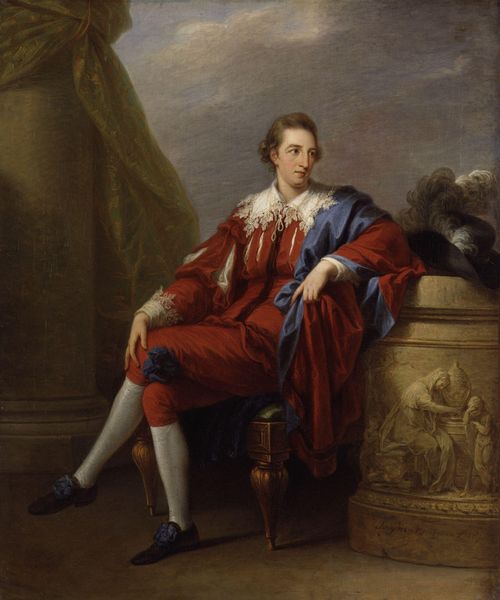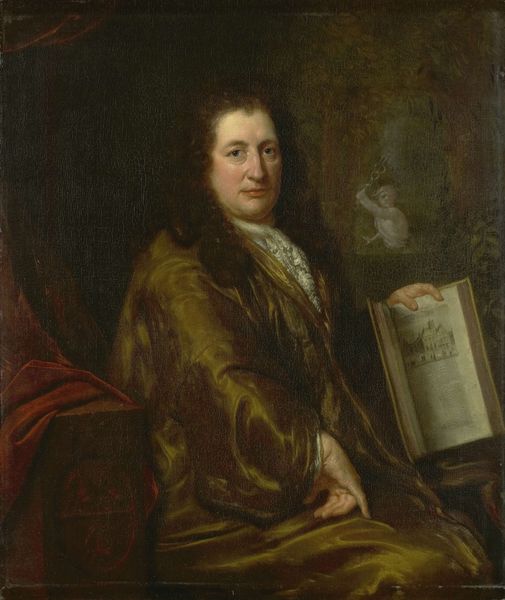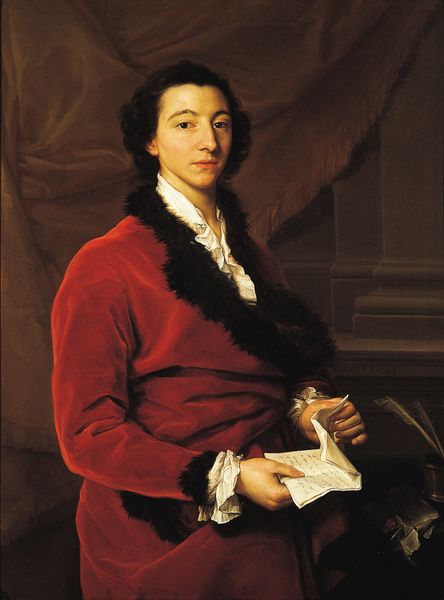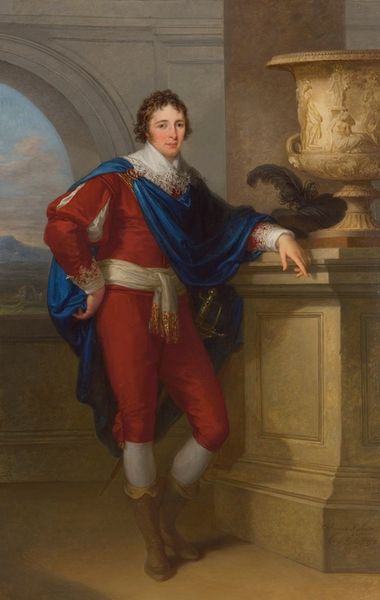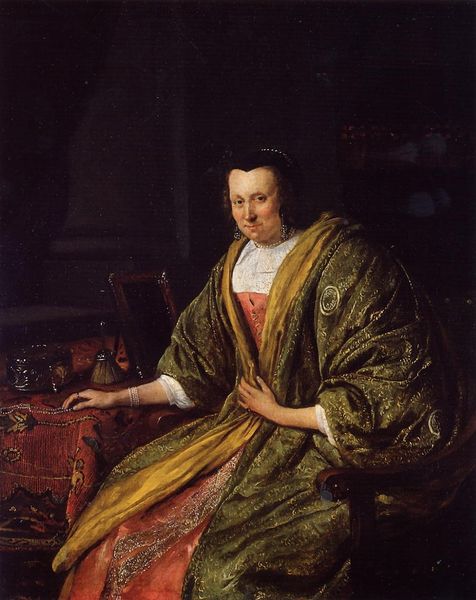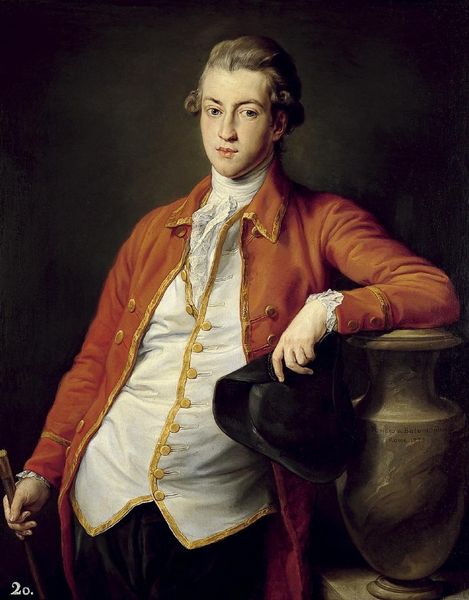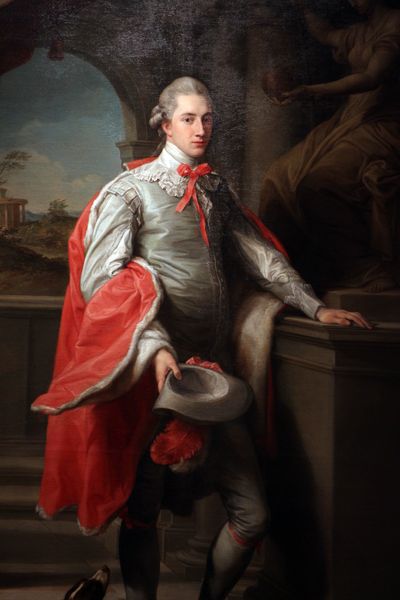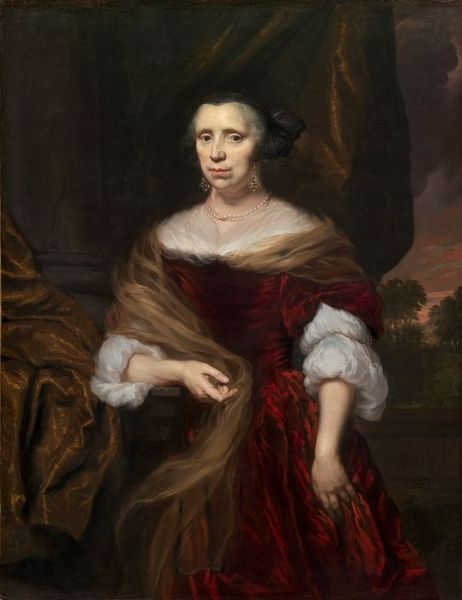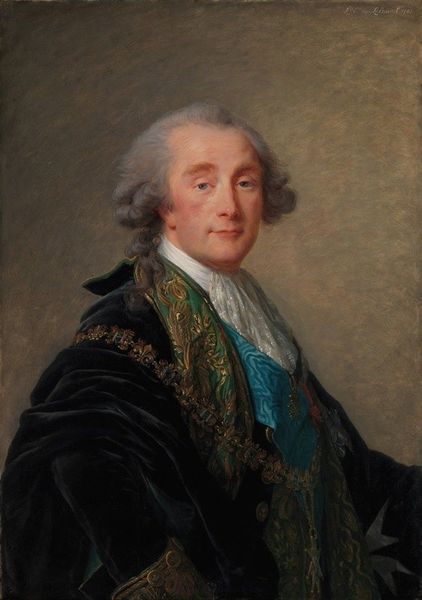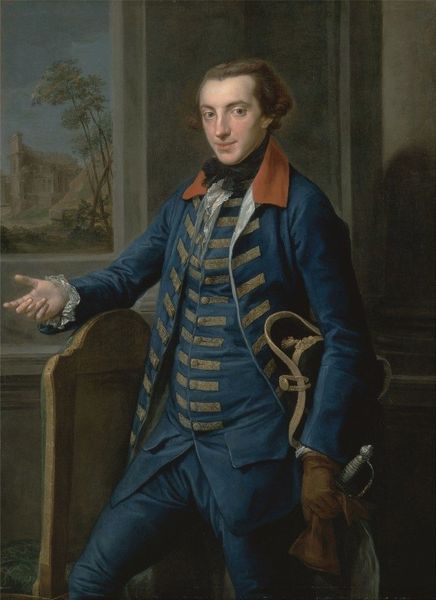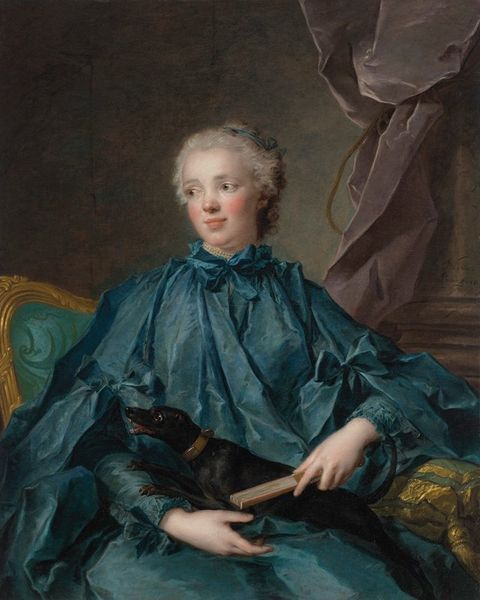
painting, oil-paint
#
portrait
#
figurative
#
neoclacissism
#
painting
#
oil-paint
#
classical-realism
#
figuration
#
history-painting
#
academic-art
#
portrait art
Copyright: Public Domain: Artvee
Curator: This is Angelica Kauffmann's oil painting from 1773 titled "John Simpson, der Vater von Maria Susanna Lady Ravensworth." Editor: Well, right away I’m struck by the boldness of the red in his clothing against that rather somber background. It's quite an assertive statement. Curator: Indeed. The Neoclassical period certainly had its flamboyant moments, and Kauffmann was navigating a world where portraiture was as much about social positioning as likeness. Here, we see John Simpson depicted in a confident pose beside what seems like a classical column and urn. It invites us to consider how masculinity was being constructed and performed at that time. Editor: I find it fascinating to analyze this through the lens of gender studies, given that Kauffmann, as a woman artist, was navigating and negotiating patriarchal structures. What does it mean for a woman to depict a man, especially in this era where visual representations solidified social hierarchies? How might she be subtly commenting on, or perhaps even subverting, these expectations? Curator: It's also important to note the public role of art during this period. Paintings such as this one often served as visual endorsements of a person's status and morality. So, in that sense, it invites discussion on how art legitimized certain social roles, as it shows the man, with the column behind, leaning next to what appears to be a funerary urn or gravemarker, symbols of nobility and importance in life. Editor: That's an interesting perspective. There’s definitely an aspect of legitimization through artistry present. Curator: In viewing this piece, I see more than just an image of a man from the past. I see the visual markers of social dynamics, gender roles, and the very complex negotiation of status embedded within Neoclassical portraiture. Editor: And I'm compelled to reflect on who has historically been allowed to represent whom, what biases are subtly present, and how we might analyze this portrait through a more consciously intersectional framework.
Comments
No comments
Be the first to comment and join the conversation on the ultimate creative platform.
